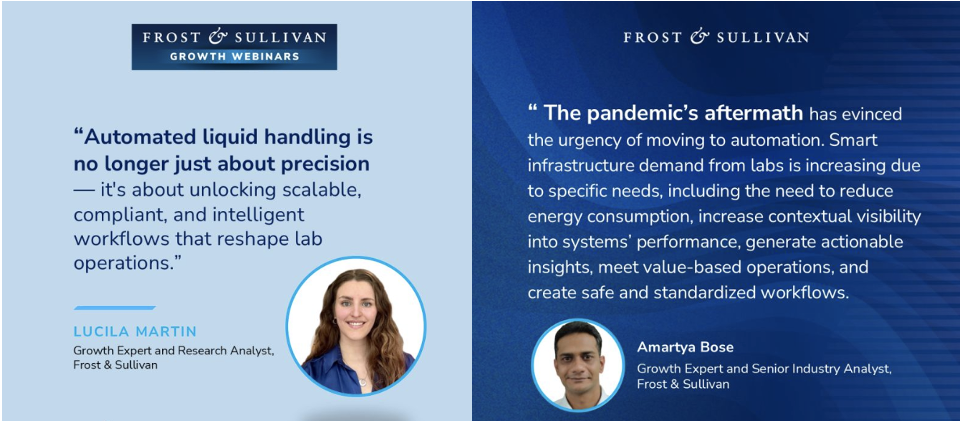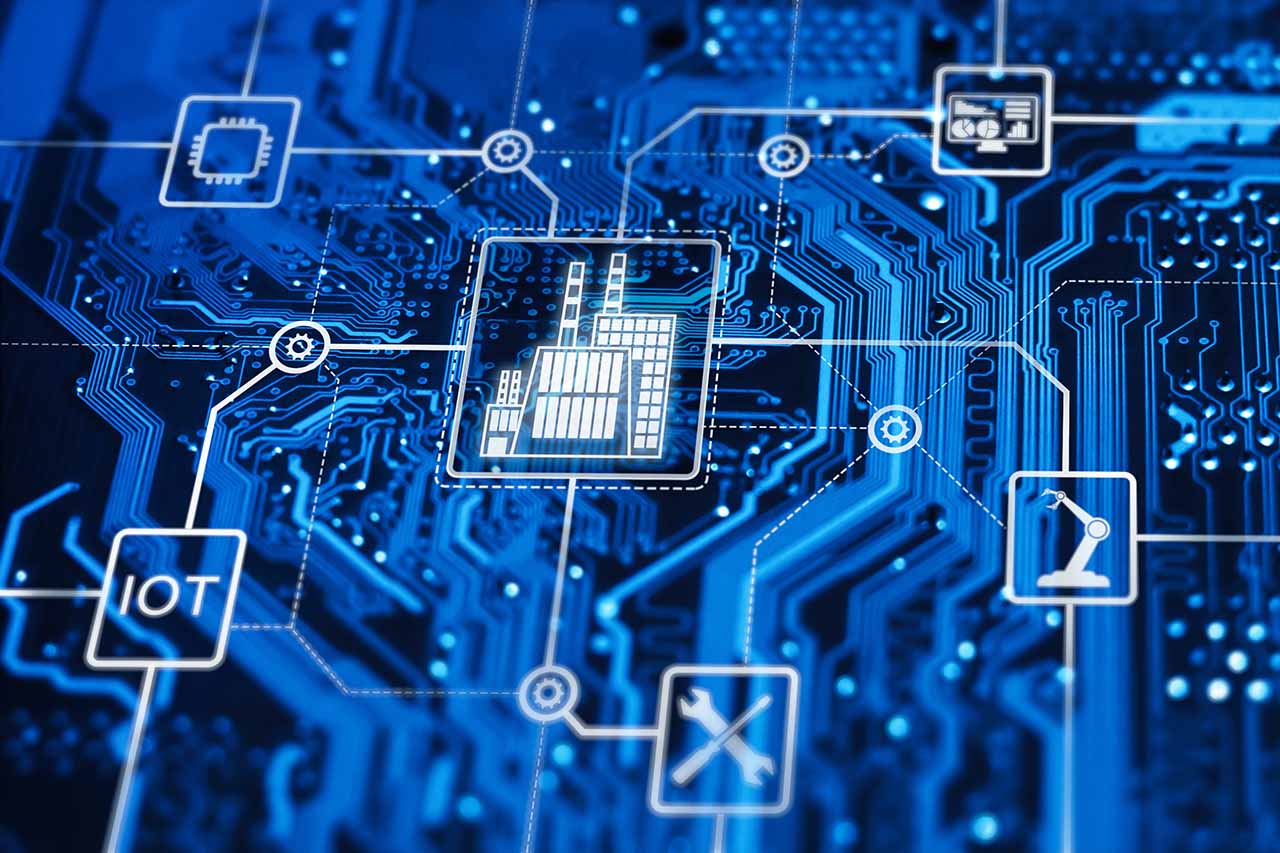Laboratory automation is entering a transformative era, moving beyond rigid, preprogrammed workflows to dynamic, AI-powered systems that optimize operations, reduce human error, and drive scalable growth.
In a recent Frost & Sullivan webinar, industry experts highlighted the key industry forces, innovation trends, and strategic imperatives that are reshaping the lab automation landscape. From disruptive AI integration to shifting global market dynamics, here are the critical insights that emerged from the discussion.
Featured Experts:
- Amartya Bose – Growth Expert & Senior Industry Analyst, Frost & Sullivan
- Lucila Martin – Growth Expert & Research Analyst, Frost & Sullivan
- Debadyuti Roy Chowdhury – Vice President of Products, InfinyOn
Key Takeaways from the Discussion
- Market Momentum and Regional Growth Trajectories
- Strong Global Outlook: The laboratory automation market is valued at $4 billion and growing steadily at 7.2%. Emerging markets in Asia-Pacific, particularly India and China, are accelerating this growth, showcasing aggressive adoption fueled by demand for faster, smarter diagnostic tools.
- North America & Europe: These regions continue to offer strategic opportunities for market expansion due to their mature infrastructure, strong vendor presence, and increasing push toward system-based lab operations.
- The Shift from Static to Intelligent Automation
-
- Technology as a Catalyst: Innovations in automated liquid handling, sample management, and workflow systems are at the heart of the industry’s evolution. These tools are enabling the rise of multi-omics, predictive diagnostics, and preventive care paradigms.
- Inevitable Disruption: With intelligent automation making its way into core lab functions, the sector is bracing for disruption — whether ready or not. Stakeholders must adapt to stay competitive.
- AI and Robotics Are Reshaping Lab Value Propositions
-
- Beyond Speed and Accuracy: Traditional metrics like test turnaround time and sensitivity are no longer enough. Labs are being redefined as value-based service providers that leverage AI to deliver deeper insights and proactive monitoring.
- Remote & Real-Time: Integration of robotics and remote monitoring systems enables continuous, intelligent oversight of lab operations, ensuring efficiency and minimizing manual intervention.
- Interoperability and Regulatory Headwinds Persist
-
- Fragmentation Challenges: Despite progress, data silos and lack of system interoperability remain key barriers to seamless automation.
- Compliance Pressure: As labs increasingly rely on AI-driven processes, navigating complex regulatory landscapes — especially regarding data protection and medical device compliance — becomes essential.
A New Era for Laboratory Automation
Laboratories are on the brink of becoming intelligent, insight-driven ecosystems. While innovation is accelerating across regions and technologies, the true challenge lies in aligning these advancements with real-world needs and regulatory realities. The next chapter in lab automation will be defined by how well stakeholders integrate adaptive technologies while ensuring security, interoperability, and clinical value.
Is your organization ready to evolve from static workflows to adaptive intelligence?





